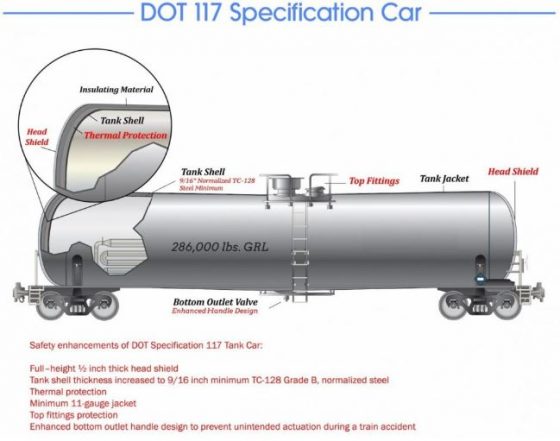The average cost of a data breach for companies surveyed has grown to $4 million, a 29% increase since 2013, with the per-record costs continuing to rise, according to the 2016 Ponemon Cost of a Data Breach Study, sponsored by IBM. The average cost hit $158 per record, but they are far more costly in highly regulated industries—in healthcare, for example, businesses are looking at $355 each, a full $100 more than in 2013. These incidents have grown in both volume and sophistication, with 64% more security incidents reported in 2015 than in 2014.
Ponemon wrote:
Leveraging an incident response team was the single biggest factor associated with reducing the cost of a data breach–saving companies nearly $400,000 on average (or $16 per record). In fact, response activities like incident forensics, communications, legal expenditures and regulatory mandates account for 59 percent of the cost of a data breach. Part of these high costs may be linked to the fact that 70 percent of U.S. security executives report they don’t have incident response plans in place.
With so much on the line, more and more companies and consumers continue to search for whom to hold accountable for cybersecurity failures, and the message is becoming clearer: executives need to get serious or watch out.
In a recent report from Bay Dynamics, “How Boards of Directors Really Feel About Cyber Security Reports,” board members expressed a surprising amount of confidence in their abilities to understand and act on cyberrisk threats and indicated there are real risks on the table for IT and security executives. Almost all of those surveyed said that some form of action will be taken should these executives not provide useful and actionable information, with 59% claiming there is a good chance one or more security executives would lose their job over such reporting failures.
More board members (26%) ranked cybersecurity risk as their highest corporate priority than any other risk, including financial, legal, regulatory and competitive risks, and 89% said they are “very involved” in making cybersecurity decisions.
Following the typical presentations from IT and security executives, more than three in five board members are both significantly or very “satisfied” (64%) and “inspired” (65%), but 32% are significantly or very “worried,” and 19% are significantly or very “confused” and “angry.”
According to the report:
Of the information provided to them during these presentations, the majority of board members (97%) say they know exactly what to do or have a good idea of what to do with the information. This statistic, however, does conflict with IT and security executives’ thoughts on the information they present. Based on our December 2015 survey, only 40% of IT and security executives believe the information they provide the board is actionable. There is a clear disconnect here between what the board perceives is actionable information, and what IT and security executives define as data that can be used to make informed decisions.
“IT and security executives are focusing on what they believe are the most impactful issues: a) forward-looking information about known vulnerabilities that could potentially harm the company in the future, b) specifics about data that was lost as a result of known infiltrations and data breaches, and c) the impact of these infiltrations and breaches,” Bay reports. “Interestingly, while information about how much is spent to address cyber risk is reported by IT and security executives in less than one-half of the companies surveyed, this was the most commonly cited information that board members said they needed to make investments for cyber risk planning and expenditures.”
Bay also pointed to a critical challenge in the education gap of many board members and the reliance upon information security executives: a large portion of the education board members have on infosec is from the organization’s IT and security executives, and “when the person education you on cybersecurity is the same individual tasted with measuring and reducing cyberrisk, there’s a fundamental disconnect.” It is extremely difficult for board members to understand what they are missing without education of their own and a third-party audit in place.
As cyberrisk continues to become a top enterprise risk priority, the consequences of failure may impact more of the C-suite than just chief information security officers or top IT executives. In May, following a social engineering fraud case that resulted in a wire transfer of 50 million euros, Austrian aircraft parts manufacturer FACC fired its chief executive of 17 years. Some regulators also want to start holding chief executives accountable in a way that truly speaks to them: their paychecks.
online pharmacy
suhagra with best prices today in the USA
According to a report from members of parliament on the British Culture, Media and Sport Select Committee, Britain’s status as the leading internet economy in the G20 is under threat from a combination of increasing reliance on digital infrastructure, and inadequate protection of it. To address the issue, they suggest that chief executives who fail to prevent cybersecurity breaches have a portion of their pay docked.
Such was the case with Baroness Harding, the chief executive of TalkTalk, Britain’s fourth-largest broadband provider, which suffered a high-profile cyberattack recently.
online pharmacy
mobic with best prices today in the USA
Her performance bonus was slashed by more than a third as a result of the company’s security failings.
online pharmacy
naprosyn with best prices today in the USA
“Companies must have robust strategies and processes in place, backed by adequate resources and clear lines of accountability, to stay one step ahead in a sophisticated and rapidly evolving environment,” said Jesse Norman, chairman of the committee. “Failure to prepare for or learn from cyber-attacks, and failure to inform and protect consumers, must draw sanctions serious enough to act as a real incentive and deterrent.”


 file a new invention—not the first to invent it—gets the rights to the patent. If one of your inventors has a patentable idea and you don’t find out about it, you risk having a competitor file ahead of you.
file a new invention—not the first to invent it—gets the rights to the patent. If one of your inventors has a patentable idea and you don’t find out about it, you risk having a competitor file ahead of you.
